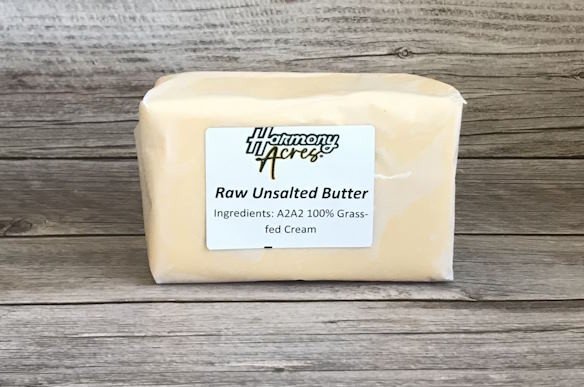Raw butter has been gaining momentum in the United States as more people turn to natural, minimally processed foods. Unlike conventional butter, raw butter is made from unpasteurized milk, which means it retains more of the natural enzymes, beneficial bacteria, and nutrients found in fresh dairy. If you’ve been curious about where to buy raw butter in the US and how to ensure you’re getting a safe, high-quality product, this guide will cover everything you need to know. Along the way, we’ll also touch on traditional methods like how to make butter from raw milk at home, so you can try it yourself.
What Makes Raw Butter Different?
Butter made from raw milk is very different from the standard butter sold in grocery stores. Here’s why it stands out:
-
Nutrient Density: Raw butter contains vitamins such as A, D, and K2, in their natural, bioavailable form.
-
Probiotics: Because the milk isn’t pasteurized, many natural bacteria survive, which can aid digestion.
-
Flavor: Many people describe raw butter as creamier and more flavorful than store-bought versions.
-
Minimal Processing: It goes through only mechanical churning, without high-heat treatment.
Legal Status of Raw Butter in the US
Before you learn where to buy raw butter, it’s important to know the laws surrounding it. While raw milk sales are heavily regulated, raw butter exists in something of a gray area.
-
Some states allow direct sales at farms or farmer’s markets.
-
Other states restrict sales, requiring consumers to purchase through herd share programs or buy directly from farmers.
-
Shipping across state lines is complicated because federal law restricts raw dairy transport.
Always check your state’s laws before buying to make sure you’re purchasing legally and responsibly.
Where to Buy Raw Butter in the US
If you’re wondering where to buy raw butter, here are some of the most accessible and reliable sources in the country.
1. Local Farms and Creameries
The most common way is to purchase directly from a local dairy farm. Many small farms sell raw dairy, including butter, under herd share programs. Buying local ensures freshness and supports small farmers.
-
Use directories such as RealMilk.com to find raw butter and raw milk producers in your area.
2. Farmer’s Markets
In states where raw dairy is legal, farmer’s markets often feature raw butter vendors. Talk to the vendors about their production methods to ensure you’re buying quality.
3. Specialty Health Food Stores
Some health food stores and co-ops, especially in states like California and Pennsylvania, carry raw dairy products including butter.
4. Herdshare or CSA Programs
A herdshare program allows you to purchase a “share” in a cow or herd. In return, you receive regular deliveries of raw milk, cream, or butter. This is one of the most reliable ways to consistently access raw butter.
5. Raw Dairy Cooperatives
Certain cooperatives pool resources from multiple dairy farmers to provide raw dairy products, including butter, to members. These co-ops sometimes deliver to pick-up locations weekly.
How to Make Raw Milk Butter at Home
If you don’t have easy access to raw butter, the good news is you can make it yourself. Many people ask questions like how to make butter from raw milk or how do you make butter from raw milk—and the process is much easier than you might think.
Step 1: Skim the Cream
Let your raw milk sit in the fridge for 12–24 hours. The cream will rise to the top. Carefully skim the thick cream with a ladle and transfer into a jar.
Step 2: Churn the Cream
-
Use a stand mixer, food processor, or traditional butter churn.
-
Whip the cream until it separates into butter solids and buttermilk. This can take 10 to 20 minutes depending on your equipment.
Step 3: Wash the Butter
Rinse the butter under cold water to remove any remaining buttermilk. This step is crucial for shelf life.
Step 4: Salt and Store
Add a pinch of salt for flavor and preservation, then pack the butter into a clean container. Store in the fridge for up to 2 weeks or freeze for longer.
That’s it—you’ve learned how to make raw milk butter at home. The process is simple, cost-effective, and ensures you know exactly what’s in your food.
Benefits of Making Your Own Butter
When you learn how to make butter with raw milk, the experience goes far beyond just saving money:
-
Freshness: You eat butter that hasn’t been sitting in storage.
-
Customization: You can make it salted, unsalted, or add herbs and spices.
-
Connection to Food: Making butter connects you to traditional food practices.
-
Nutritional Superiority: You keep all the enzymes and nutrients intact.
Safety Tips for Homemade Raw Butter
While raw butter is nutritious, it does come with safety considerations since it isn’t pasteurized.
-
Always purchase raw milk from trusted farms with excellent hygiene practices.
-
Wash all utensils and containers thoroughly before use.
-
Keep the butter refrigerated and consume within 2 weeks for best safety.
-
If anyone in your household is immunocompromised, consult a doctor before consumption.
Why Choose Raw Butter Over Store-Bought?
Here are some of the biggest reasons people are making the switch:
-
Taste: Much richer and creamier.
-
Nutrients: Contains natural CLA (conjugated linoleic acid), omega-3s, and fat-soluble vitamins.
-
Digestibility: Easier for some people to digest than pasteurized butter.
-
Support Local Agriculture: Buying local raw butter often supports small, family-owned farms.
Read More: How to Make Butter with Raw Milk for Healthier Eating
Final Thoughts
Finding where to buy raw butter in the US may take a little research, but between small farms, farmer’s markets, co-ops, and herdshare programs, it’s more accessible than ever. And if availability is limited in your area, learning how to make raw milk butter at home ensures you can always enjoy this nutrient-dense, traditional food.
Raw butter is more than just a kitchen specialty—it’s a way to reconnect with traditional food-making practices, support sustainable farming, and enjoy superior nutrition. Whether you buy it from a trusted source or churn it at home, it’s worth exploring.









